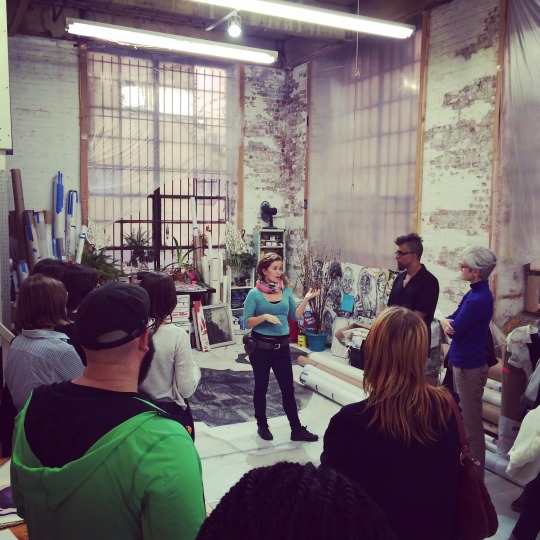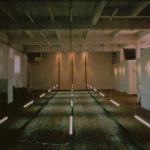“How Does A Gallery Find Me?”
A Talk with Michael Findlay from Acquavella Galleries
On September 26, 2016, Director of Acquavella Galleries Michael Findlay gave a talk at NYFA to a room full of artists to tackle the age-old question of “How Does a Gallery Find Me?” As you can imagine, the answer will never be straightforward and for an hour last month, we were allowed to peek into the mind of one of today’s leading gallery directors.
The evening included a lot of personal research by Michael, who spoke to a lot of “art finders”, i.e. gallery owners, curators and critics, to receive a broad perspective about the practice of finding artists. So how do they do it? How do they discover artists? Let’s find out.
Your Work
You might think this is obvious and yet often artists are surprised by this fact. The resounding consent across the industry is that the most important thing in achieving recognition from a gallery is your work.
“The beginning, the middle, and the end is the work. That deserves 99.9% of your energy. You have to be absolutely sure that the work you show is your absolute best,” – Michael Findlay.
Your Website
It’s not a substitute for your studio. But it’s a universal tool for your first step. Michael’s tip is to not make your website too clever and let content move around too much. You need clarity. For example, if you work on a large scale, then give people a sense of scale by putting a figure in the room with your artwork. Your photographs should give context. The images are more important than anything else on your website. See NYSCA/NYFA Artist Fellow Katie Bell’s (Fellow in Painting ‘15) website for a good and simple example.
“Have business cards, that have your website address on it. If you meet someone who is an influencer, giving them a business card is much more effective than any social media.” – Michael Findlay
Social Media
Certainly maintain a social media presence, but realize that social media alone is not necessarily going to lead you straight into a gallery. There is a danger in having a parallel existence and showing your work on the small screen. You might be giving a very false impression of your work, because you’re asking the viewer to make an instant judgment on a pixelated screen.
Gallery Openings
It’s straightforward. Go to the openings. Take an interest in the gallery that you might want to be represented by. Make Thursday nights a fixed day in your calendar for openings. If you do that it should become apparent that there are some galleries that are sympathetic to the work you do and some galleries that are not.
“Even though you don’t know anybody in a gallery, I think you should make a hit list of galleries that you can conceivably see your work in.” – Michael Findlay
How do you get to know a gallerist you might ask? Often, gallerists like to find artists themselves, but on the other hand there are always exceptions – maybe the rules are made to be broken but realize that luck and timing are huge parts of that.
“You need to use your feet, the map is there, the galleries are not hidden.” – Michael Findlay
The Front Desk
“In the relationship, you’re the eager spouse, and the gallery is the reluctant spouse.” – Michael Findlay
What should you do when you walk into a gallery? Never regard the person behind the front desk as not important. They might be running the gallery in two years. Make friends with the front desk person. There’s nobody who works in a gallery who is not worth your attention. Today’s front desk person is tomorrow’s gallery director.
Sometimes the best method is also the easiest method. Ask the question: “How does this gallery choose their artists?” If they tell you they are not looking for artists (which they very likely will), then you take the opportunity to talk to someone else from the gallery.
Art Fairs
We know it’s difficult to gauge how much of a pest to make of yourself. You want to be available, but not too available. As an artist, one of the places that is always worth frequenting are art fairs. Should you be approaching art dealers during a fair? Consider this: they are there working hard to sell artwork of the artists they are currently representing. So no, probably not. However, art fairs are a fantastic opportunity for scouting galleries that might fit your bill.
Your Network
Being around and maintaining a degree of visibility is very important. Perfect the art of “the gentle way” – be somewhat aggressive but not too aggressive.
What is the best way for someone to see your work? During the talk Michael pointed out that nothing beats seeing an artwork live and that should be your main goal; to get people in front of the physical work of art.
“Having friendships and networks with other artists is absolutely vital. It’s not about knowing someone who’s famous. It’s more about being in the mix. The most influential people who told me about great artists were other artists.” – Michael Findlay
All your relationships are useful, be they other artists, extended family, friends – getting people through your studio doors on any pretext is very important. There’s virtually nobody that should not be invited to your studio.

The Studio Visit
Give your visitor(s) very, very clear instructions on how to find your studio. Send it in a text message, an email etc. If it’s easier, tell them you’ll meet them at the Starbucks or another shop on the corner, but make sure they don’t waste time trying to find your studio.
Know exactly what you’re going to show. You might have a little more than ten minutes with them, maybe 25-30 minutes. Often they will not give you a full hour. Show them what you can see on their (gallery or apartment) wall or what you would like to see there. Realize there are many different ways of doing this and that every artist has their own way to show work.
Make sure to not overwhelm your visitor. Provide a chair and offer coffee, tea or water. Anything more elaborate is unnecessary. The most difficult thing for any artist is to keep your mouth shut. Let your work speak for you. If there’s an awkward silence, embrace it.
“Remember, it’s the behavior that counts (after the studio visit), not the words during the visit.” – Michael Findlay
Group Shows
If you have the chance to exhibit with a group of fellow artists, do it. This could be through artist cohorts, studio buildings, artist-run galleries. Michael emphasized that he still goes to group shows, as they’re usually on for a longer time and give him a chance to see it according to his own schedule.
Group shows are much easier to get attention for and multiple artists exhibiting means more contacts that will walk through the gallery doors.
Patience aka The Willingness to Wait
While conducting research, Michael asked a curator what the most important characteristic of an artist is, apart from the quality of their work. The answer might be surprising, but it’s the willingness to wait.
Often developments depend on the nature of your work, the current times, what is considered trendy, sometimes simply the luck of the draw. You have to be patient and trust that your work is the only essential thing that counts.
In the meantime, knowing groups of fellow and supportive artists, knowing NYFA, knowing other organizations and institutions that can help you along your way, is vital.
– Mara Vlatkovic, Digital Communications Officer
This talk was part of NYFA Learning, a program offering regular professional development events such as Boot Camps, workshops, Doctor’s Hours and the Immigrant Artist Program. To read more articles on building your professional artist career, visit the Business of Art section of NYFA’s website. Sign up for NYFA News and receive artist resources and upcoming events straight to your inbox.
Images: Michael Findlay Talk, photo credit: Alicia Ehni; Studio visit with Swoon, photo credit: Mara Vlatkovic





